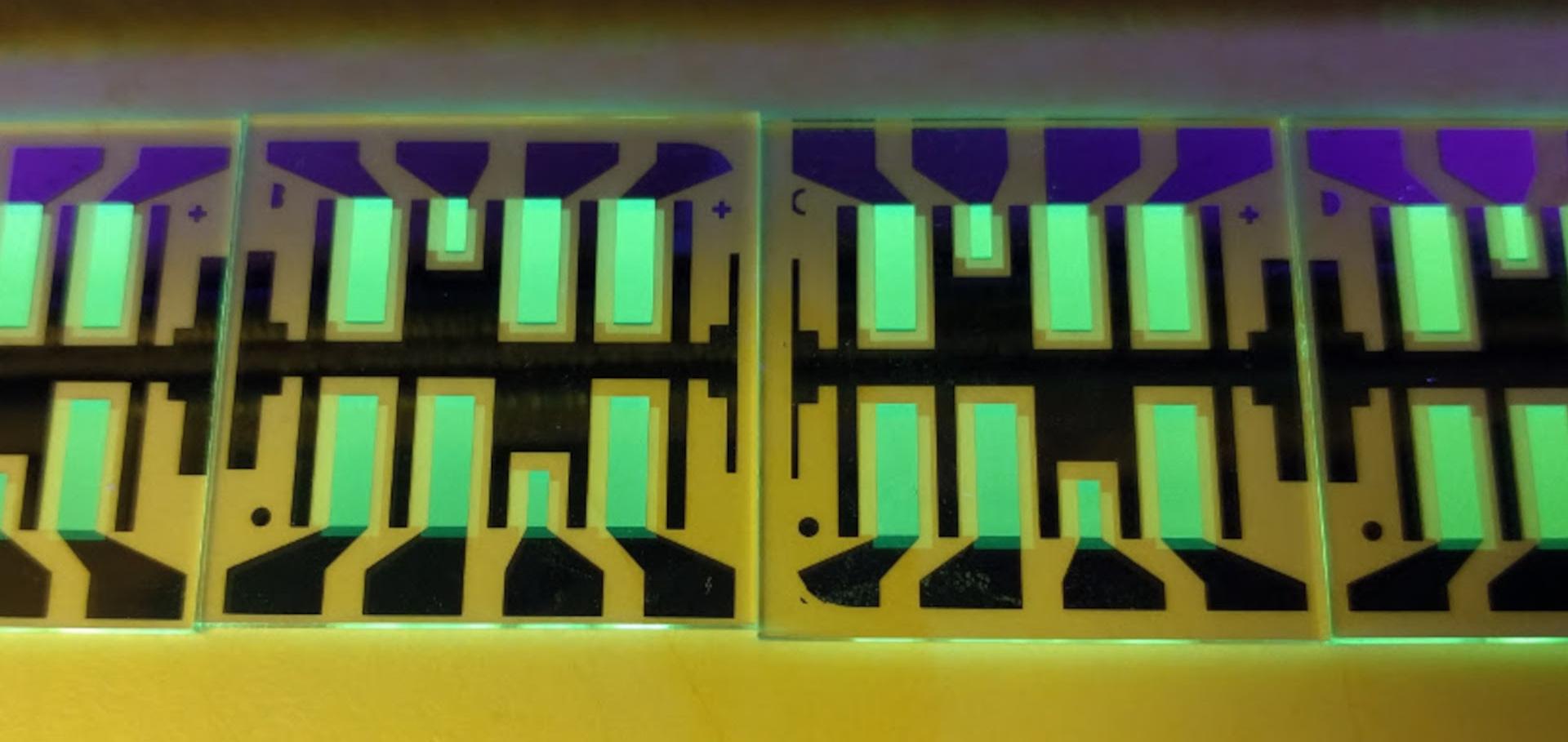Naphthalenetetracarboxylic Diimide Derivatives: Molecular Structure, Thin Film Properties and Solar Cell Applications
Zeitschrift fur Physikalische Chemie (2018)
Abstract:
© 2018 Walter de Gruyter GmbH, Berlin/Boston 2018. The effciency of organic solar cells is not only determined by their absorber system, but also strongly dependent on the performance of numerous interlayers and charge transport layers. In order to establish new custom-made materials, the study of structure-properties relationships is of great importance. This publication examines a series of naphthalenetetracarboxylic diimide molecules (NTCDI) with varying side-chain length intended for the use as n-dopable electron transport materials in organic solar cells. While all compounds basically share very similar absorption spectra and energy level positions in the desired range, the introduction of alkyl chains has a large impact on thin film growth and charge transport properties: both crystallization and the increase of conductivity by molecular doping are suppressed. This has a direct influence on the series resistance of corresponding solar cells comprising an NTCDI derivative as electron transport material (ETM) as it lowers the power conversion efficiency to 1%. In contrast, using the side-chain free compound it is possible to achive an efficiency of 6.5%, which is higher than the efficiency of a comparable device comprising n-doped C60as standard ETM.Organic Semiconductors ☆
Chapter in Reference Module in Materials Science and Materials Engineering, Elsevier (2018)
MINERVA: A facility to study Microstructure and INterface Evolution in Realtime under VAcuum
Review of Scientific Instruments AIP Publishing 88:10 (2017) 103901
Abstract:
A sample environment to enable real-time X-ray scattering measurements to be recorded during the growth of materials by thermal evaporation in vacuum is presented. The in-situ capabilities include studying microstructure development with time or during exposure to different environmental conditions, such as temperature and gas pressure. The chamber provides internal slits and a beam stop, to reduce the background scattering from the X-rays passing through the entrance and exit windows, together with highly controllable flux rates of the evaporants. Initial experiments demonstrate some of the possibilities by monitoring the growth of bathophenanthroline (BPhen), a common molecule used in organic solar cells and organic light emitting diodes, including the development of the microstructure with time and depth within the film. The results show how BPhen nanocrystal structures coarsen at room temperature under vacuum, highlighting the importance of using real time measurements to understand the as deposited pristine film structure and its development with time. More generally, this sample environment is versatile and can be used for investigation of structure-property relationships in a wide range of vacuum deposited materials and their applications in, for example, optoelectronic devices and energy storage.Introduction
Chapter in , Springer Science and Business Media LLC 32:10 (2017) 1797-1797
Introduction
Journal of Materials Research Springer Nature 32:10 (2017) 1797-1797


